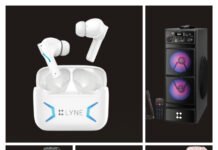We are publishing an interview of Mr. Kunal Kishore Dhawan – Chief Executive Officer, Navia Life Care – A New Delhi based startup which is giving a new dimension to patient engagement, compliance and monitoring.

About the founders:
- Kunal Kishore Dhawan: CEO of Navia Life Care. Responsibilities include ideation, evaluation and execution. Masters in Biotechnology and Management from Carnegie Mellon University, and a Bachelors of Science (Honors) from University of Delhi. Prior to starting Navia Life Care, worked in Strategy, Marketing and Business Development at Fresenius Kabi, a global pharmaceutical company, part of the 25Bn Euro Fresenius group of companies. Experience of working in three different geographies- India, Europe (Germany) and North America (US). Also had stints with PwC in Switzerland, GlaxoSmithKline in the US, Abbott Vascular in Delhi, Ranbaxy in Gurgaon and Pittsburgh Life Sciences Greenhouse (PLSG), a non-profit VC in the Western Pennsylvanian area.
- Shourjo Banerjee: Chief Technology Officer – handling both the development of the initial prototype of the product, as well as devising the technology strategy of the company. Holds an undergraduate degree in Computer Engineering from the University of Wisconsin-Madison. Specializing in computer hardware, computer network and application management, worked for the computer architecture research team for NXP semiconductors in Noida. Holds a US patent on low power microprocessor fast speed techniques.
Both founders are childhood friends from school, decided to work on this project together after having gained significant experience in the corporate world.
What is the problem you are trying to solve?
Navia Life Care is keen to address a growing and an often overlooked problem in the healthcare industry – treatment adherence and compliance. Studies conducted in 17 countries found that 40% patients do not adhere to prescribed treatments to completion, while 20% prescriptions go unfulfilled. In the US, lack of adherence leads to about 125,000 deaths every year, amounting to a $290B problem. The doctor to patient ratio in India is abysmal, with the Indian Statistical Institute pegging this number to be 1 doctor to approximately 1,700 people. This poses serious doubts in the effective monitoring of patients on a regular basis, and the quality and quantum of care being offered. 20-30% patients never go back after the first or the second appointment, and in the absence of translatable electronic records, leads to the conclusion that the system cannot track the progress of these patients. The aforementioned problems throw a challenge for providers such as hospitals and practitioners, and Navia Life Care aims to assist providers in overcoming them.
 What is the uniqueness about your Startup?
What is the uniqueness about your Startup?
Our B2B2C model differentiates our offering from the rest. We focus on building customized mobile solutions for providers such that it incentivizes them to push the product to their patients. By offering a white-labeled solution, we further push it to our clients. Our technology stack operates on a simple fundamental – build a complex product that is simple to use, which is critical in an industry like healthcare where a majority of users are older in age. We are working on some interesting solutions to further make the digital process easier, such as speech-to-text, treatment templates, use of recommendation engines and trend analysis etc. Lastly, our team is experience in the field, with mentors and advisers who are industry experts.
Why do you choose crowdfunding?
Why should quality healthcare be restricted to the cities, or be reserved for the privileged? We believe healthcare needs to be accessible and affordable, especially in rural areas and for people at the bottom of the economic pyramid. Crowdfunding brings together different people with different thoughts and ideas towards a common goal. We wish to take Navia to the masses, and partnering with social groups, NGOs and even govt. bodies is one such step. Development of a dedicated health app in Hindi is another. This aim is to make quality healthcare reach a billion people, for which we are running a crowdfunding campaign, and invite you to share our vision.
Why should anyone or investor back you?
We are being backed by some veterans and experts from the healthcare industry. Our lead investor is Benori Ventures LLP, started by the founder of Evalueserve and Ashoka University. We are mentored by the former chairman of PwC India, and a serial investor and entrepreneur as well.
The purpose of the campaign is to highlight the importance of treatment compliance among patients, especially in rural areas and people below the poverty line. By contributing to our campaign, backers will be directly impacting the lives of potentially millions of people, earning rewards and goodwill in the process. The healthcare system of our country needs to be improved, and greatly needs the participation of the people in mainstream, which we wish to facilitate.
Where can people back your project?
https://goo.gl/pFahR5

What would you do after raising funds?
Funds generated in the campaign will be directly used for creating awareness of compliance and good health among the public, by setting up health camps in partnerships with social enterprises and hospitals. Additionally, a health app in Hindi and other regional languages will be developed that will further take the message to the masses.
What is the revenue model? What is the logic behind it? Explain your thought process.
Our B2B2C model is fairly simple – a one-time development and licensing fee to brand and develop the mobile app for the healthcare provider, following which a subscription fee (periodic) kicks in. The quantum of both of these categories is dependent on the complexity of the product developed, usage and size of the provider in question.
Who are the consumers that you are targeting? How is this going to affect them?
We are primarily targeting users that are either chronic patients or those with long-term medical conditions. These number more than 200 million (and growing) in India, through over 75,000 hospitals and 200+ pharmaceutical companies operating in India. Our solution is a tool for them to manage their health conditions, treatments and records more effectively than ever before. It will directly impact their health outcomes, by helping them get better faster, more easily and with lower efforts. Of course, it comes free-of-cost to them, increasing the appeal even more.
What is the big picture of your startup? Will it lead to something bigger? If so, how?
Our current business description is pretty comprehensive, which says – a health tech company building customized mobile solutions to improve health outcomes through increased patient compliance, monitoring and engagement. However, moving further we will go beyond mobile, with our thoughts on wearables and integration with medical devices. Our vision is to build a sustainable healthcare business that impacts the lives of millions of patients. Health apps with a capability of reaching the far flung corners of the country, and impact even the bottom of the pyramid is the goal for our company. Partnerships and expansion into innovative domains such as pharmaceuticals, hospitals and even social impact enterprises will go a long way in helping us realizing this vision.

What is the success story of your startup in your own words?
Building a company requires time, dedication, grit and patience. One faces different challenges at different stages of the organization building process. From hiring the right team, development of the product to changing customer behavior or mindset and retention of users. Each challenge is faced in its own unique way. For us, there is no success story, since we have not achieved even 1% of what we have set out to do. To formulate a success story at this stage will be counter-productive, and only introduce complacency into the ranks. But our vision and the path to achieving our goals remains bright. It is for the team to stick together, adapt to market conditions, keep our ears and eyes open for customer feedback, and be nimble on our feet to stay relevant in the market.
Thanks Mr. Kunal. Best of luck!






